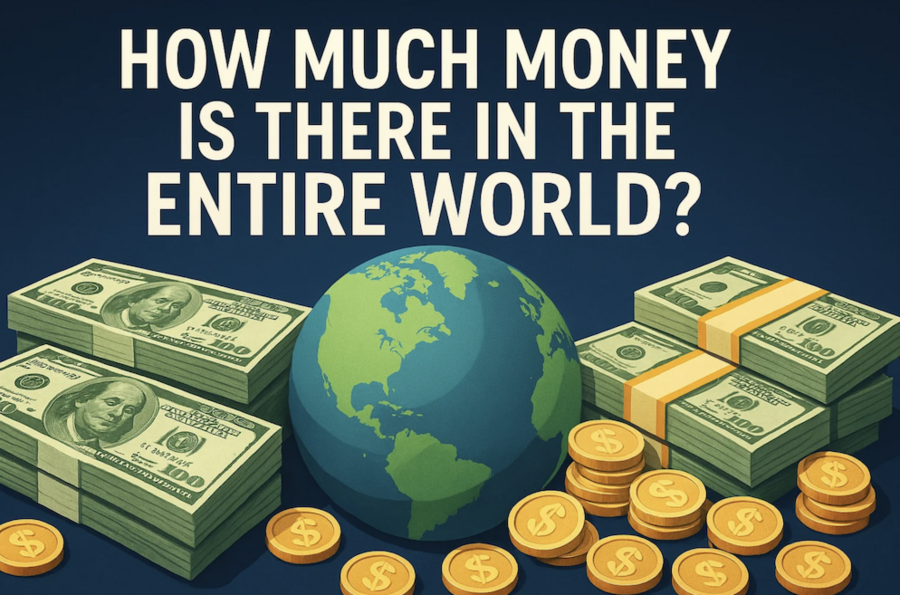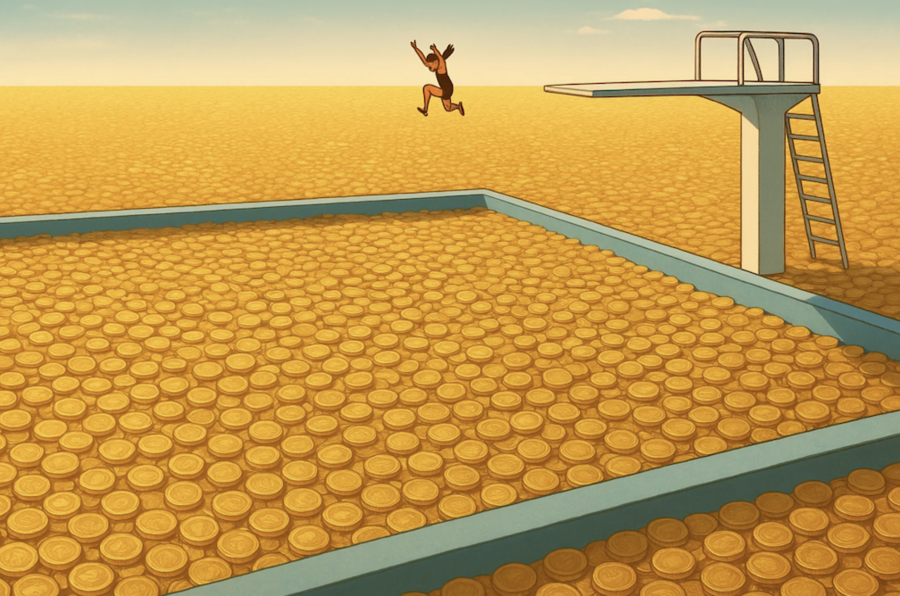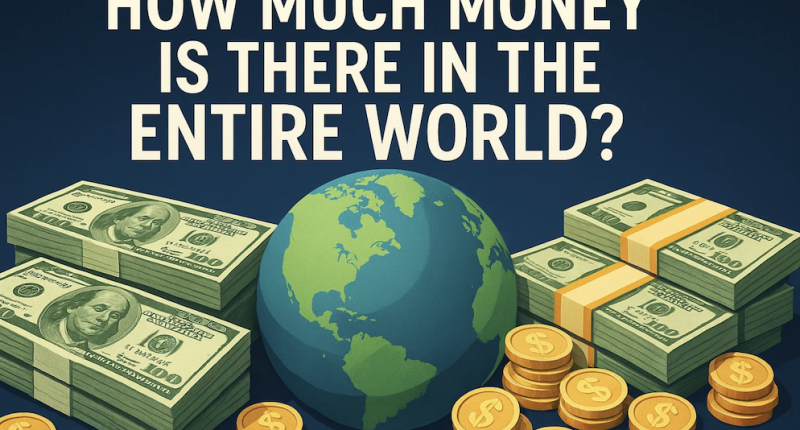If you could magically vacuum up every dollar bill, coin, digital balance, money market stash, offshore account, cookie jar fund, and stripper thong tip—converted into U.S. dollars—what would the grand total be?
It turns out this question has several different (but equally fascinating) answers depending on how you define “money.”
In economics, money isn’t just what you’ve got folded up in your wallet or locked in a safe. There are multiple layers to the global money supply—starting with the most basic form of physical currency, “M0,” and expanding to include checking accounts, savings, CDs, institutional funds, and other less liquid assets (aka M1, M2, and M3). Each layer tells a different story about how much value is actually floating around in the world economy—and how little of it is actually printed on paper.
M0: $8–9 trillion
The most obvious question we want to answer right off the bat is: How much physical currency exists in the world?
As you might guess, physical currency means coins and paper money in all the various world currencies (but remember, we are just gonna assume everything has already been converted to USD). Economists would refer to this as the “M0” money supply (that’s a zero, not an “o”). In more formal economic terms, M0 is equal to the aggregate sum value of all the physical coins and banknotes around the globe.
The total value of all physical currency (notes and coins) in circulation worldwide is on the order of $8–9 trillion. Spoiler alert: As you’ll learn in the sections below, this means that less than 10% of the world’s money supply is exists in actual paper and coin form.
M1: $50 trillion
Here’s where this question gets really interesting and a tiny bit complicated. It turns out that M0 represents only around 10% of all the money that is available to spend in the world at any given moment. How is that possible? Well, when it comes to money, there’s actually a lot more than just coins and dollar bills floating around the world. For example, let’s say you deposit $5,000 worth of physical USD bills and coins into your checking account today. Tomorrow, when you go online to check the account balance, you will see $5,000. But that does not mean there is $5,000 physically sitting in your special account that goes untouched until you decide to buy something. Your $5,000 deposit immediately goes into the bank’s overall pool of reserves. These reserves are then loaned out in small fractions to other people who need business loans, mortgages, payrolls, and all the other transactions that banks make possible. This exchange can happen because banks are only legally required to keep a fraction of their reserves physically on hand at any given time.
Now, let’s say someone walks into your bank today and takes out a small business loan of $4,000. This person now has $4,000 to spend on whatever his or her business needs. But that doesn’t mean you can only spend $1,000 worth of what’s in your checking account now. Thanks to the bank’s implicit guarantee, you could go out and spend every dollar of that $5,000. So technically, the bank has created $9,000 worth of spending power based on just $5,000 worth of physical money. In an instant, $4,000 worth of new money (spending power) is magically born. When you add up M0 plus all the value that is subsequently created, economists refer to it as M1. The most recent estimate of the worldwide value of M1 is $50 trillion.
M2: $120 trillion
M2 is very much like M1, except it includes less liquid assets like CDs and money market accounts. The current estimated worldwide value of M2 is $120 trillion. For comparison, in 2016 global broad money was on the order of $70–$80 trillion, so M2 has doubled since 2016.
M3: $125–$130 trillion
M3 is generally considered the global money supply. M3 includes all of M2 plus larger long-term deposits, institutional money-market funds, and other slightly less liquid instruments. Many countries report an M3 or equivalent “broad money” metric. Globally, this broadest measure is roughly $125–$130 trillion in U.S. dollar terms.
So, if you’re counting all the money on Earth—including the big institutional stuff most of us will never see—then you’re looking at a global money supply nearing $130 trillion.
By the way…
I tried using ChatGPT’s SORA image creator to create an image to go with this article. In the end, here’s what I went with:

I really wanted the image to be a person jumping into a gigantic pool of money (a la, Scrooge McDuck). Here’s what it came up with:

For my next prompt I got more specific and described the pool, the size of the person and asked it to use coins instead of money:

So, of course, my next prompt asked SORA to re-do the previous image but make it so the money was only in the pool. Duh… Here’s what it came back with:

And then I gave up.






